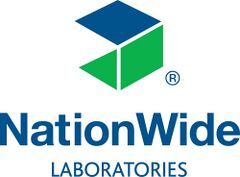Difference between revisions of "Lactate dehydrogenase"
Jump to navigation
Jump to search
| Line 36: | Line 36: | ||
[[NationWide Laboratories]] | [[NationWide Laboratories]] | ||
[[Category:Lizard_and_Snake_Glossary]] | [[Category:Lizard_and_Snake_Glossary]] | ||
| − | [[Category:Clinical Chemistry| | + | [[Category:Clinical Chemistry|ABCDEFGHIJKLMNOP]] |
Latest revision as of 15:56, 28 April 2022
Introduction
This enzyme is present in high concentrations in a wide range of organs and tissues including red blood cells. It is found in the cell cytoplasm and is released into the blood during changes in cell membrane permeability or necrosis. Five isoenzymes are recognised including heart, liver and muscle.
Small animals
Causes of increased LDH activity
- Hepatocellular damage especially necrosis
- Skeletal muscle disorders
- Cardiac muscle disorders
Complementary tests
Increases in LDH activity are not organ specific. Isoenzyme analysis is not performed in small animals. This is not included in profiles for small animals.
Equine
Causes of increased LDH activity
- Hepatocellular damage, hepatitis
- Muscle damage
- Renal disease - in some cases
- Haemolysis
Rare causes of increased LDH activity
- Cardiac muscle disorders including myocardial infection
- Pancreatitis
- Intramuscular injection
Complementary tests
Isoenzyme analysis by electrophoresis may be indicated when total LDH activity is elevated in order to determine the affected organ. However, there are usually other enzymes that are more organ specific that can be assayed, making this enzyme of questionable use.
